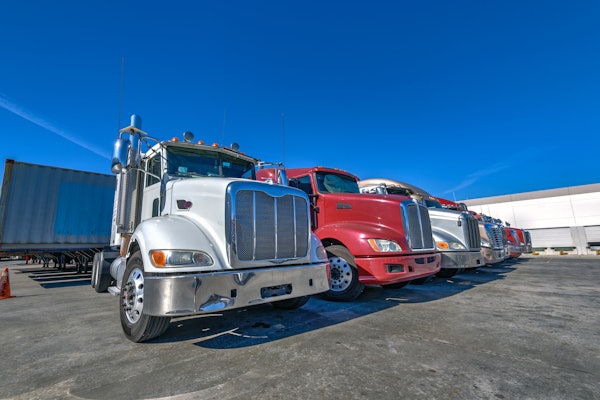In the years to come, major component suppliers to Freightliner must be prepared to do business with the entire DaimlerChrysler Truck Group, not just the Portland, Ore., based North American truck builder, Freightliner LLC President & Chief Executive Officer Chris Patterson says.
“The future for Freightliner is with suppliers who are competitive in global terms and meet the needs of DaimlerChrysler’s Truck Group,” Patterson told attendees at the 17th annual Heavy Duty Manufacturers Association breakfast, held Friday at the Mid-America Trucking Show in Louisville, Ky. That includes positioning Freightliner LLC as the sole channel for the aftermarket. “We are determined to control our fate in the aftermarket. We want to be the face with our customers,” Patterson said. And suppliers must be willing to invest and locate wherever Freightliner needs them to, he said. For example, by 2012 a significant portion of Freightliner’s output will come from Mexico.
Patterson argued that changes are coming not just due to corporate strategies but as a result of government regulation, which is driving out “off-the-shelf” solutions. In order for DaimlerChrysler and Freightliner to achieve innovation, they will have to re-engineer systems, and even generic components and parts will need to be tailored to support unique designs. Components and parts that fit on Freightliners won’t fit on competitors’ trucks.
The impact on suppliers’ own companies will be profound, Patterson suggested. “The will have to invest greater in technical expertise [to support truck makers’ custom solutions] and less on pull-through sales efforts.”
Truck makers themselves will be undergoing major changes, Patterson predicted. In North America, “the heavy-duty market is fully consolidated, but in mid-range, the market is right for consolidation.” A number of small players can’t achieve the sales volume needed to support the investments in technology they must make in the years to come.
Regarding the outlook for sales in the near term, Patterson sees 2007 truck demand a bit weaker than he earlier expected. Instead of customers beginning to buy trucks at a healthy pace in the middle of the third quarter, “I’m beginning to think they will push it out a bit further.”
Patterson continues to actively support efforts in Washington to obtain tax breaks and other incentives to adopt lower-emissions trucks. The pre-buys in 2002 and 2006 – and the inevitable pre-buy in 2009 – are unfortunate on all fronts, including environmental objectives.
Patterson also discussed some of Freightliner’s own efforts, including a new heavy-duty truck to be unveiled in a few months and a phase-in of a new engine built on a global platform.
Freightliner needs to introduce a new truck because the challenges of higher operating costs and the increasing demand for driver retention “cannot be overcome by tweaking existing vehicles,” Patterson said. One of the challenges in truck design is the fact that today’s truck drivers are larger than they once were, and “we have built the cab to accommodate the larger driver pool.”









